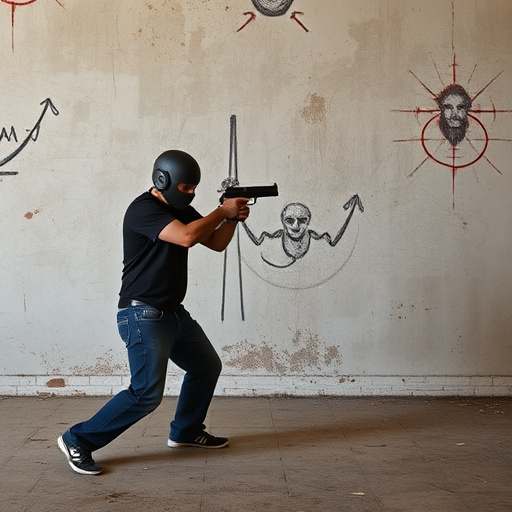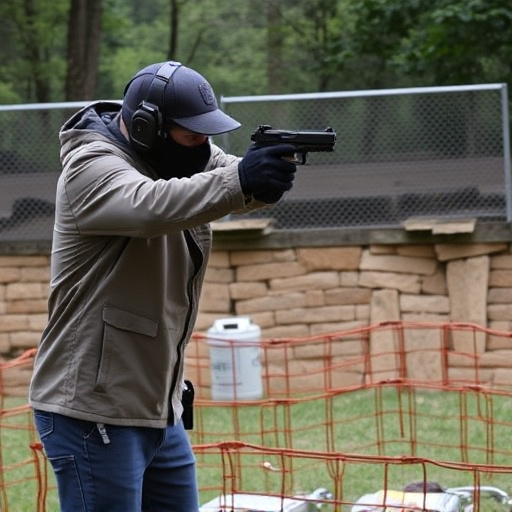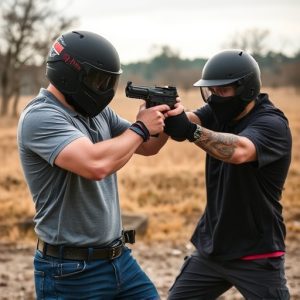Stun Guns for Beginners: Safety Features & Effective Contact Points
Stun guns, or electronic control devices (ECDs), temporarily disable targets with electric shocks th…….
Stun guns, or electronic control devices (ECDs), temporarily disable targets with electric shocks through contact points. Beginners should focus on understanding key contact areas and be aware of their device's voltage, pulse width, and skin contact area. Proper placement is crucial for effectiveness, as sensitive areas cause more severe shocks while larger body parts reduce impact but still deliver power. Familiarizing oneself with range, power settings, safety features like automatic shut-off, adjustable output, LED lights, and alarm systems is essential for safe and effective use as a tool of last resort for beginners.
“Uncover the power of stun guns and their life-saving potential through contact points. This comprehensive guide explores how these non-lethal weapons work, focusing on the effectiveness of different contact areas. We delve into the importance of safety features, especially for beginners, aiming to demystify stun guns with an emphasis on protection.
From understanding crucial contact points to highlighting key safety mechanisms in stun guns designed for newcomers, this article equips readers with vital knowledge for informed decisions.”
- Understanding Stun Gun Contact Points and Their Effectiveness
- Key Safety Features in Stun Guns for Beginners
Understanding Stun Gun Contact Points and Their Effectiveness

Stun guns, also known as electronic control devices (ECDs), work by delivering an electric shock through contact points to temporarily incapacitate a target. Understanding these contact points and their effectiveness is crucial for users, especially beginners, who want to ensure the stun gun’s safety features are maximized. Key contact areas typically include the hands, face, throat, or any exposed skin. The effectiveness of a stun gun depends on several factors: the voltage output, pulse width, and the area of skin contacted.
For beginners using stun guns with safety features, it’s important to note that proper placement of the device is vital. Contacting sensitive areas like the face or throat can cause more severe shocks, while aiming for larger areas like the hands might reduce the impact but still deliver a powerful stun. Different stun guns have varying ranges and power settings, so users should familiarize themselves with their devices’ specifications to ensure they’re using them safely and effectively.
Key Safety Features in Stun Guns for Beginners

When introducing stun guns to beginners, key safety features become paramount. Many modern stun guns are designed with user safety in mind, incorporating several mechanisms to ensure responsible use and minimize risk. Among these, an automatic shut-off feature is a must-have; it prevents accidental activation and prolongs the device’s battery life. Additionally, stun guns equipped with safety switches or triggers require intentional actuation, preventing unwanted discharge.
Another critical safety aspect is controlled output, offering adjustable settings to match different scenarios. This allows users to employ less force when necessary, ensuring the stun gun remains a tool of last resort. Moreover, some models feature LED lights and alarm systems that enhance visibility and deter potential attackers, making them valuable tools for personal safety in low-light conditions or during an emergency.
Stun guns, equipped with robust safety features, offer a powerful tool for personal protection. Understanding contact points and their effectiveness, along with prioritizing safety aspects designed for beginners, ensures responsible ownership. Opting for stun guns with built-in safeguards can significantly enhance user confidence and mitigate risks, making them valuable assets in self-defense strategies. For those new to stun guns, these features are essential, providing both peace of mind and effective protection in various situations.


